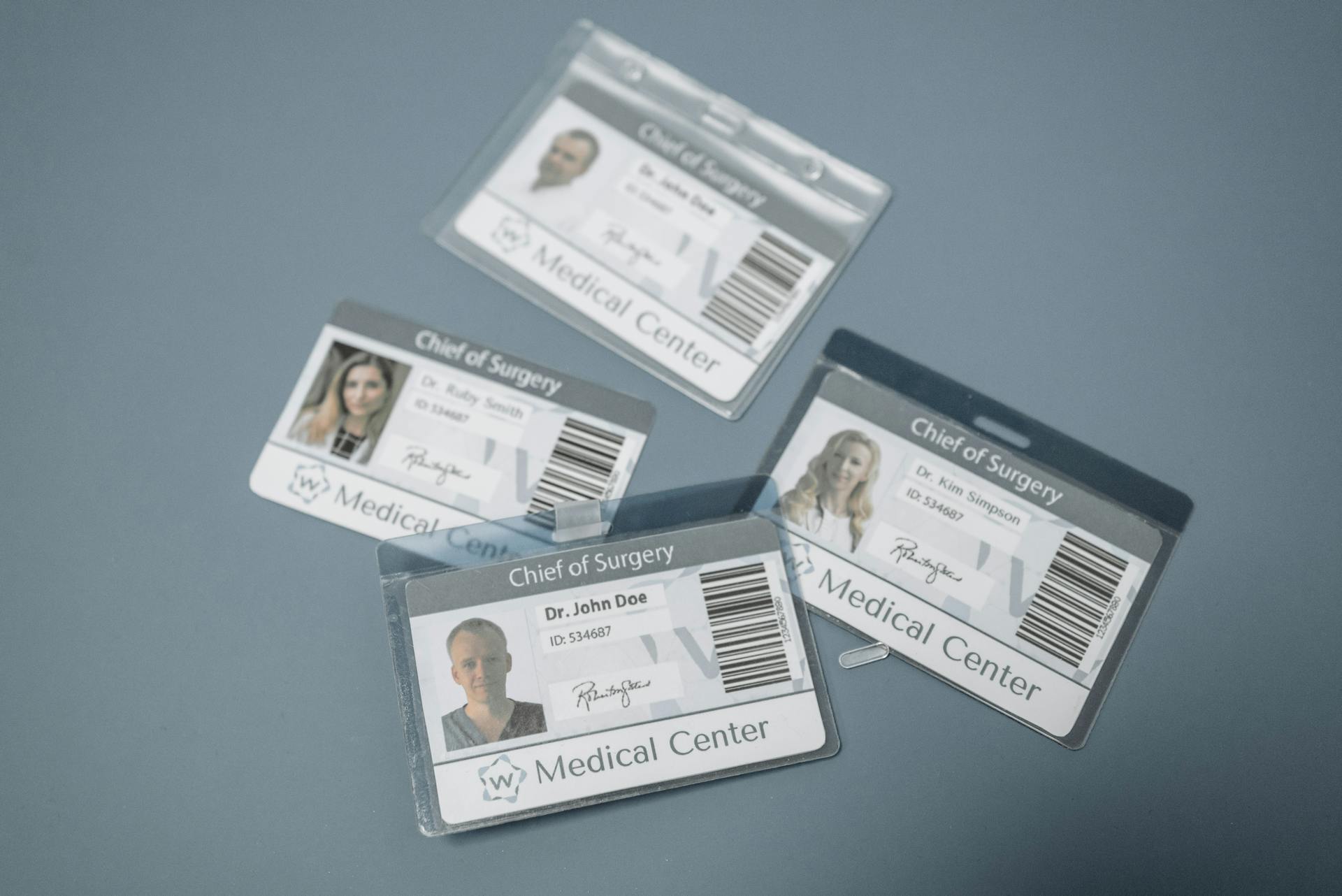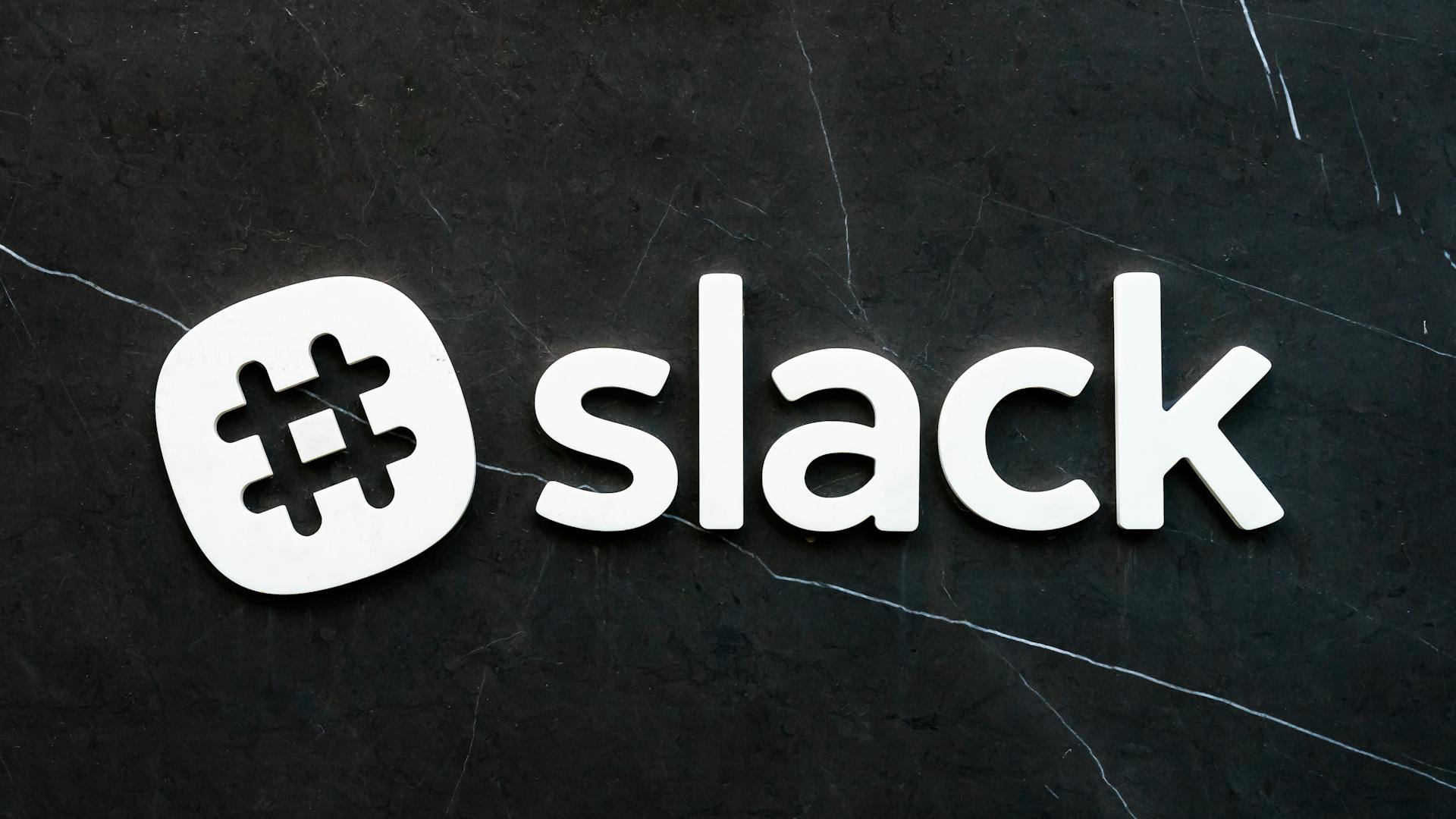
The BCBS credentialing process can be a daunting task for healthcare providers, but understanding the basics can make it more manageable. The process typically starts with a provider's application, which must be submitted to the BCBS credentialing department.
The application will ask for detailed information about the provider, including their education, training, and work experience. This information is used to verify the provider's qualifications and ensure they meet the necessary standards.
BCBS credentialing departments often use a third-party credentialing company to assist with the verification process. These companies help to streamline the process and ensure that all necessary information is gathered.
The entire credentialing process can take several months to complete, with some providers taking up to 6 months to receive their credentialing decision.
If this caught your attention, see: When Health Care Insurers Negotiate Contracts with Healthcare Providers or
Credentialing Process
The credentialing process can be a bit overwhelming, but don't worry, I've got the scoop.
To start, you'll need to register for a CAQH account if you don't already have one. This will allow you to self-report professional and practice information to BCBSIL.
Additional reading: How Many People Don't Have Health Insurance in the Us
You'll need to complete all application questions, ensuring all sections are complete and accurate. This means double-checking your info to avoid any delays.
BCBSIL may contact you to supplement or clarify certain responses on your application. Be prepared to provide additional documentation if needed.
Verisys will verify your credentialing data after you enter it into the CAQH Provider Data Portal. They may reach out to you to re-attest to your data's accuracy or complete missing information.
Here's a rundown of what you can expect:
You'll receive written notification of your status when the credentialing process is completed.
Checking Status and Updates
You'll want to stay on top of your credentialing status, and BCBSIL makes it easy to do so. To check the status of your credentialing process, simply enter your NPI or license number in their Credentialing Status Checker.
You'll receive automatic reminders from CAQH to review and attest to the accuracy of your data, so be sure to stay on top of those updates. If you need to report any changes to your practice, use the CAQH Provider Data Portal within the specified time frames.
See what others are reading: Why Is Dental Work so Expensive Even with Insurance
Here are the key deadlines to keep in mind:
- Within five business days for state health care professional license revocation, federal drug enforcement agency license revocation, Medicare or Medicaid sanctions, revocation of hospital privileges, any lapse in professional liability coverage required by a health care entity, health care plan or hospital, or conviction of a felony.
- Within 45 days from the date you knew of the change, for any other information provided on your credentialing application, i.e., practice address, hospital affiliation, etc.
Check Status
To check the status of your credentialing process, simply enter your NPI or license number in our Credentialing Status Checker. This tool is designed to provide you with the most up-to-date information about your credentialing status.
You can use the Credentialing Status Checker by following a few easy steps. It's a quick and convenient way to stay on top of your credentialing process.
Enter your NPI or license number in the designated field to get started.
Worth a look: Bcbs Credentialing Status Checker
Updates
Updating your information is a crucial part of the credentialing process. You must report changes to your practice within five business days if you've experienced a state health care professional license revocation, federal drug enforcement agency license revocation, Medicare or Medicaid sanctions, revocation of hospital privileges, any lapse in professional liability coverage required by a health care entity, health care plan or hospital, or conviction of a felony.
If this caught your attention, see: Hospital Benefit Fund
You can use the CAQH Provider Data Portal to report these changes. This portal will send you automatic reminders to review and attest to the accuracy of your data.
You'll also need to update your information within 45 days if you've experienced any other changes, such as a change in practice address. This includes any other information provided on your credentialing application.
Here are the specific deadlines for reporting changes:
You must enter your changes into the CAQH Provider Data Portal for BCBSIL to access during the credentialing and recredentialing process.
Credentialing for Healthcare Providers
BCBS credentialing can be a straightforward process if you know what to expect. You'll need to register for a CAQH account if you don't already have one, which will allow you to self-report professional and practice information to BCBSIL.
The credentialing process involves completing an application, ensuring all sections are accurate, and authorizing BCBSIL to access your credentialing information. You'll also need to attest to your data profile and upload supporting documentation.
Suggestion: Bcbs Credentialing Texas
BCBSIL may contact you to supplement or clarify certain responses on your application, and you may be required to submit additional documentation in some cases.
The credentialing process can take some time, but you can help speed it up by responding promptly to requests from Verisys, the company verifying your credentialing data. You'll receive written notification of your status when the credentialing process is complete.
Hospitals and facilities have a slightly different process, which involves filling out an enrollment form and providing required documentation. The checklist and signature documents can be found online within provider enrollment.
Physicians and professionals will need to create a profile on CAQH ProView as part of the credentialing process. This is a crucial step, as BCBSIL can't complete credentialing without it.
Recredentialing, or reattestation, is required every 120 days, and can be done through CAQH ProView. You'll need to update your information if necessary, and attest to its accuracy.
Check this out: Bcbs Hiring Process
For Healthcare Facilities
If you're a healthcare facility looking to get credentialed with BCBS, you'll need to fill out the Allied Provider Recredentialing Form (PDF) after reviewing the required document checklist.
To start the credentialing process, make sure you have all the necessary documentation ready to go. This includes signature documents, which can be found online within provider enrollment.
Credentialing is a crucial step in becoming a part of the BCBS network, and it's good to know that once you're done, you'll receive notification of your status.
Hospitals and facilities are required to recredential every three years from the time they first join the network. This means you'll need to submit updated forms every three years.
The forms required for recredentialing vary depending on your facility type. Here's a list of the types of facilities that need to use the Facility Provider Recredentialing Form (PDF):
- Clinical independent laboratory
- Durable medical equipment supplier
- Freestanding Radiology Center
- Medicare-approved ambulatory surgical facility
- Medicare-approved physiological laboratory
- Urgent care center
If your facility type isn't listed above, you'll need to use the Facility Provider Recredentialing Form (PDF) instead. Remember to submit your forms within 120 days of the request, and make sure they include a signature and are dated correctly.
Frequently Asked Questions
How long does it take to get credentialed with BCBS TX?
CAQH credentialing applications are typically reviewed within 8-10 calendar days. Contact your local Network Management Office for questions and to track your application status.
How long does credentialing take?
Credentialing typically takes 90 to 120 days, but this timeframe can vary. Learn more about the credentialing process and its benefits for patients.
What are the stages required in provider credentialing?
The provider credentialing process involves several key stages, including identifying required documents, verifying insurance companies, and completing the CAQH, among others. By understanding these stages, you can streamline your credentialing process and ensure a smooth onboarding experience.
Does it cost money to get credentialed with insurance companies?
Yes, individual medical credentialing typically costs between $100-200, varying by service provider. Re-credentialing costs are usually similar, so it's worth checking with your provider for a quote.
What is credentialing paperwork?
Credentialing paperwork involves verifying a healthcare provider's qualifications, including their education, work history, and liability insurance, to ensure they meet state and regulatory requirements. This process helps ensure patients receive care from qualified professionals.
Sources
- https://www.bcbsil.com/provider/network/network/credentialing
- https://www.nebraskablue.com/Providers/Credentialing
- https://www.bcbsmt.com/provider/network-participation/network/how-to-join/credentialing-physician-and-professional
- https://www.bcbsm.com/providers/help/credentialing/
- https://www.bcbsok.com/provider/network/credentialing.html
Featured Images: pexels.com


